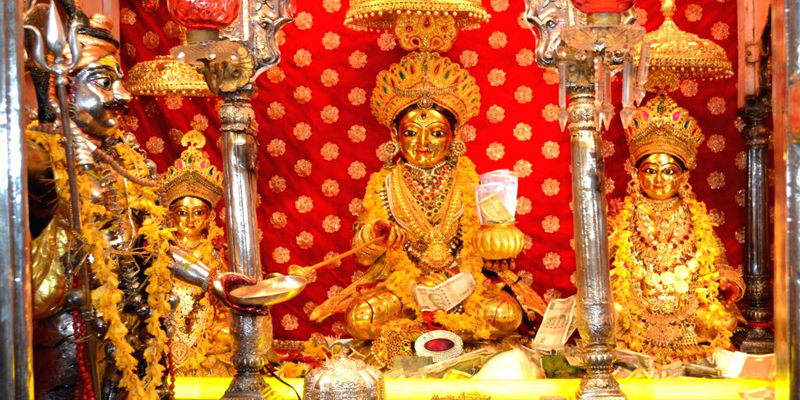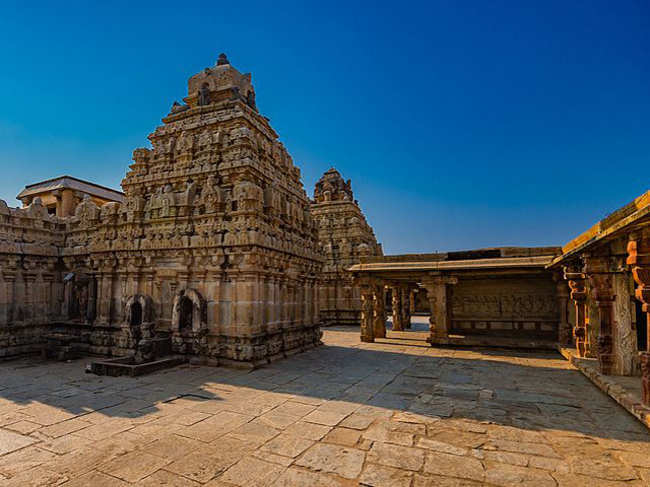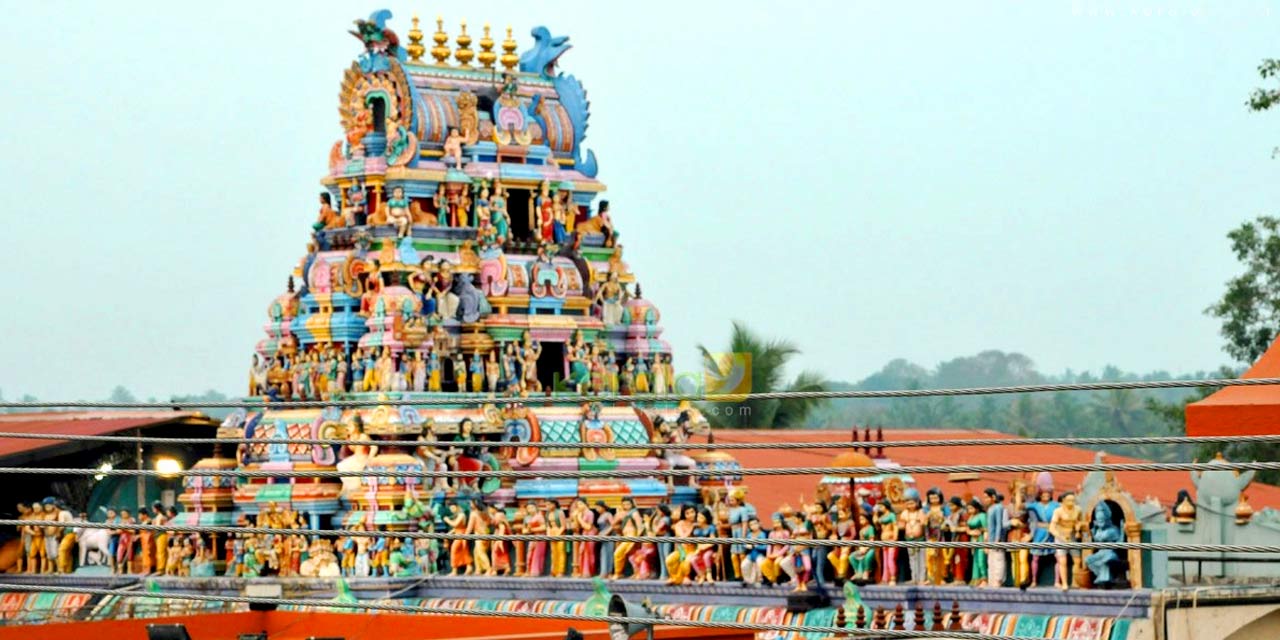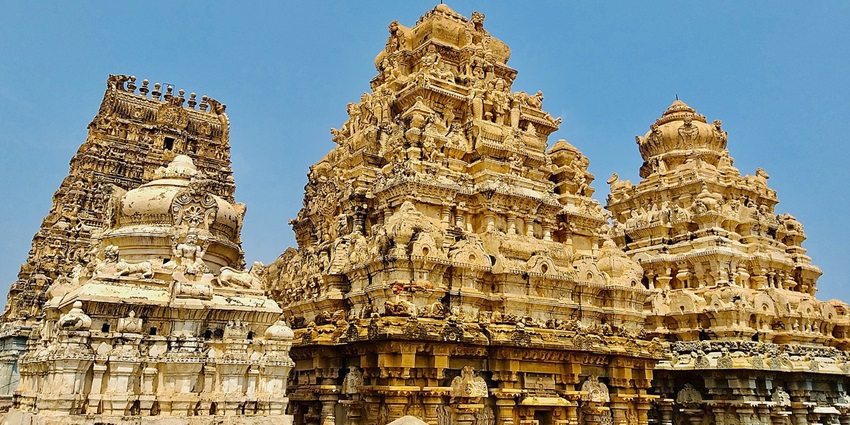
About Annapurna Temple Varanasi
Varanasi, one of the oldest cities in the world, is famous for its spiritual aura and iconic temples. Among these, the Annapurna Temple Varanasi, dedicated to Goddess Annapurna, holds a special place in the hearts of devotees. Located near the renowned Kashi Vishwanath Temple, on Dashashwamedh Road in Vishwanath Gali, the temple symbolizes food, abundance, and nourishment.
The name “Annapurna” comes from two Sanskrit words: “Anna,” meaning food, and “Purna,” meaning complete or filled. Devotees visit the Annapurna Mandir Varanasi to seek the blessings of the goddess, who is believed to ensure that no one in her sacred city ever goes hungry.
This temple is not just a place of worship but also a reminder of the importance of gratitude for food and sustenance, which forms the very basis of life.
History of Annapurna Devi Temple
The Annapurna Devi Temple Varanasi has an interesting historical and mythological background. It was built in 1729 AD by Peshwa Baji Rao, a prominent Maratha ruler. The temple stands as a testament to the devotion of the Marathas towards Varanasi and its cultural heritage.
According to Hindu mythology, the story of Maa Annapurna is tied to Lord Shiva and Devi Parvati. Once, Lord Shiva and Devi Parvati were playing a game of dice. To make the game exciting, Shiva bet his belongings, but he kept losing to Parvati. Eventually, he lost all his possessions, including his snake, his rudraksha beads, and even his skull bowl.
Lord Vishnu intervened and manipulated the dice to help Shiva win. When Parvati discovered this deception, she was furious. She argued that life itself was an illusion (Maya) and decided to disappear, leaving the world without food and nourishment. This created chaos, as living beings struggled to survive.
Moved by the plight of the world, Devi Parvati reappeared in the form of Maa Annapurna and set up a kitchen in Kashi to feed everyone, including Lord Shiva himself. Since then, she has been revered as the goddess of food and sustenance.
Architecture of Annapurna Temple Varanasi
The Annapurna Temple is a beautiful example of traditional Indian temple architecture. The entrance gate, adorned with intricate carvings and sculptures, welcomes devotees into the temple complex.
The temple includes a spacious hall, or mandapa, where devotees gather for prayers and rituals. The sanctum sanctorum houses the idol of Maa Annapurna, depicted with a jeweled bowl in one hand and a ladle in the other, symbolizing the distribution of food and nourishment. The goddess is dressed in golden attire, with a crescent moon adorning her forehead.
One of the unique aspects of the Annapurna Mandir Varanasi is that it has two idols of the goddess. The brass idol is displayed daily for devotees, while the gold idol is unveiled only on the occasion of Annakut, celebrated after Diwali.
The temple’s walls feature intricate carvings that depict scenes from Hindu mythology, floral patterns, and geometric designs, showcasing the craftsmanship of artisans from that era.
Mythological Significance of Annapurna Devi Mandir
The legend of Maa Annapurna is not just a tale but a profound lesson about life. The game of dice between Shiva and Parvati symbolizes the unpredictable nature of life, while the goddess’s disappearance demonstrates the importance of food in sustaining the world.
When Parvati returned as Maa Annapurna, she set up a kitchen in Varanasi, emphasizing that food is not merely a necessity but also a divine blessing. Even today, devotees chant her name before eating, expressing gratitude for sustenance.
The people of Varanasi firmly believe that no one goes hungry in the sacred city because of the goddess’s presence. This belief makes the Annapurna Devi Temple a place of hope and devotion for millions.
Best Time to Visit Annapurna Temple
The Annapurna Devi Mandir is open throughout the year, but the best time to visit is during the Diwali and Annakut festivals. During these celebrations, the temple is beautifully decorated, and special rituals are performed.
If you wish to avoid the festival crowds, plan your visit during the winter months (November to February), when the weather in Varanasi is cool and pleasant.
How to Reach Annapurna Mandir Varanasi
The Annapurna Temple Varanasi is well-connected by air, train, and road.
- By Air: The nearest airport is Lal Bahadur Shastri Airport, 25 km away. Taxis and cabs are available to take you to the temple.
- By Train: Varanasi Junction is 4 km from the temple. Auto-rickshaws and taxis are easily accessible.
- By Road: Varanasi is connected to major cities via highways. Local transport options like cycle-rickshaws and tuk-tuks are convenient for navigating the narrow lanes near the temple.
What to Do at Annapurna Temple Varanasi
- Participate in Aarti Ceremonies: The temple conducts morning and evening aartis that are a divine experience.
- Offer Prayers and Food: Devotees often donate food or money to the temple as a gesture of gratitude.
- Meditate: The serene atmosphere of the temple provides the perfect setting for quiet reflection and meditation.
- Enjoy the Architecture: Admire the intricate carvings and design elements of the temple, which are steeped in history and culture.
- Explore Nearby Attractions: Visit the Kashi Vishwanath Temple, Dashashwamedh Ghat, and Sankat Mochan Hanuman Temple, all located within a short distance.
Dos and Don’ts at Annapurna Devi Temple
Dos:
- Dress modestly and respect the sanctity of the temple.
- Follow the temple rules regarding offerings and prayers.
- Carry some cash for donations or food offerings.
- Remove your footwear before entering the temple premises.
Don’ts:
- Avoid photography or using electronic devices inside the temple.
- Do not bring leather items, tobacco, or non-vegetarian food into the temple.
- Maintain silence and avoid disturbing others during their prayers.
Nearby Attractions
The Annapurna Temple Varanasi is surrounded by several other spiritual and cultural landmarks:
- Kashi Vishwanath Temple (400 m)
- Dashashwamedh Ghat (700 m)
- Manikarnika Ghat (750 m)
- Sankat Mochan Hanuman Temple (3.9 km)
- Assi Ghat (3.1 km)
These attractions make the temple visit even more enriching.
The Annapurna Devi Temple in Varanasi is more than just a place of worship. It is a symbol of abundance, gratitude, and divine sustenance. The temple’s rich history, stunning architecture, and mythological significance make it a must-visit for anyone exploring the spiritual heart of India.
Whether you are seeking blessings, learning about Indian culture, or simply finding peace in the sacred city of Varanasi, the Annapurna Temple Varanasi is a destination that will leave a lasting impression on your soul.





